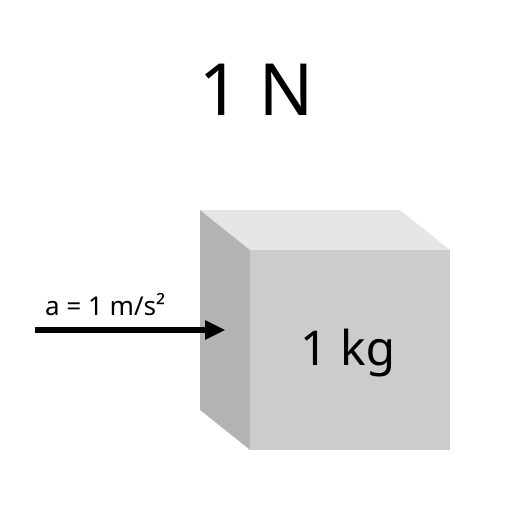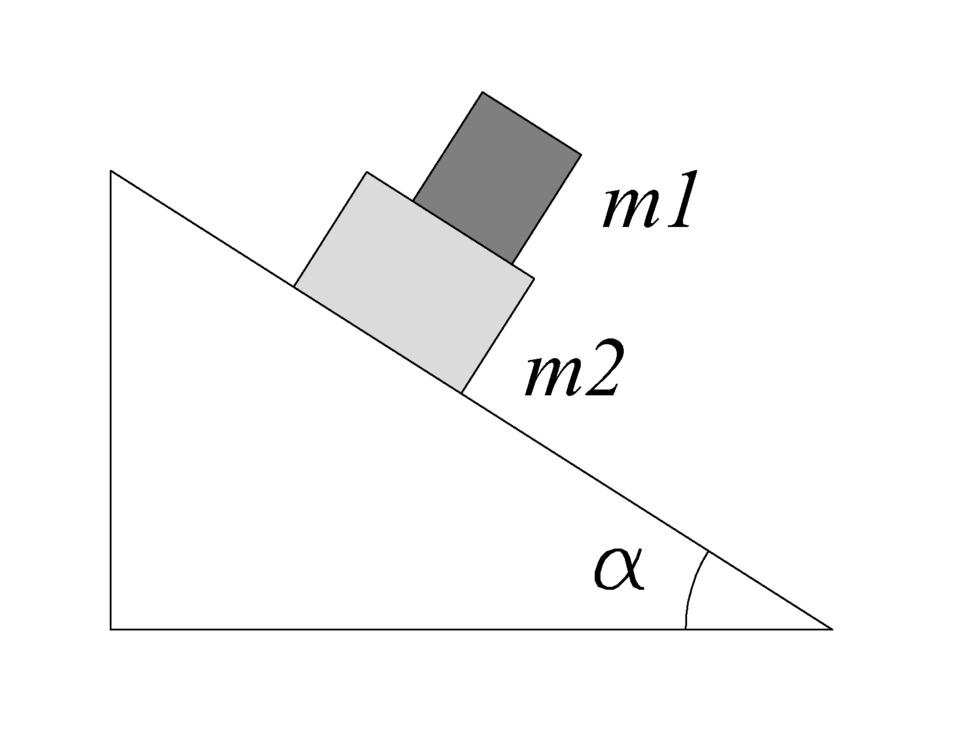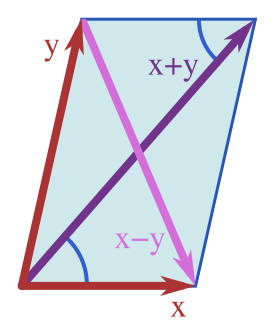OCR Specification focus:
‘Use F = ma; recognise the newton as the unit of force and apply consistently.’
Newton’s Second Law and the Newton
Understanding how forces produce motion lies at the heart of classical mechanics. Newton’s Second Law of Motion quantifies the relationship between force, mass, and acceleration, forming a cornerstone of A-Level Physics study.
Newton’s Second Law of Motion
Historical Context and Concept
Sir Isaac Newton’s Second Law describes how an object’s motion changes when a resultant force acts upon it. It bridges the link between the cause of motion (force) and the effect (acceleration). The law is essential for analysing motion in one or more dimensions and provides the mathematical foundation for dynamics.
Statement of the Law
Newton’s Second Law states that the rate of change of momentum of an object is directly proportional to the resultant force acting on it, and occurs in the direction of that force.
This description emphasises that forces cause changes in motion, not motion itself, highlighting the dynamic relationship between applied forces and the acceleration they produce.
Relating Force, Mass, and Acceleration
EQUATION
—-----------------------------------------------------------------
Newton’s Second Law (Force) = F = ma
F = Resultant force acting on the object (newton, N)
m = Mass of the object (kilogram, kg)
a = Acceleration of the object (metres per second squared, m s⁻²)
—-----------------------------------------------------------------
The equation F = ma applies when the mass remains constant. It provides a quantitative relationship: the greater the resultant force on an object, the greater its acceleration, and vice versa. Similarly, for the same force, an object with larger mass experiences smaller acceleration.
This relationship can be applied in one or more dimensions using vector notation, meaning both direction and magnitude must be considered.
The Newton as the Unit of Force
Definition and Use
The newton (N) is the SI unit of force. It standardises the measurement of force across physical systems and ensures consistency across equations and experimental data.

One newton is defined as the force required to accelerate a mass of 1 kg at 1 m s⁻². The cube represents the mass and the arrow the acceleration vector, linking directly to F = ma. Source.
Newton (N): The force required to accelerate a mass of one kilogram at a rate of one metre per second squared.
Hence,
1 N = 1 kg m s⁻²
This definition arises directly from Newton’s Second Law and underpins all quantitative descriptions of force in mechanics.
Understanding Resultant Force
Multiple Forces and Vector Addition
Objects rarely experience a single force. Often, several forces act simultaneously—gravitational, normal contact, tension, friction, or applied forces. The resultant force is the vector sum of all individual forces acting on an object.

A free-body diagram displays all external forces acting on a body as vectors. Here, weight, normal contact, applied force and friction are shown so that their vector sum (the net force) can be determined. Once the net force is known, F = ma gives the acceleration in magnitude and direction. Source.
When the resultant force is zero, an object either remains at rest or moves at constant velocity, consistent with Newton’s First Law. When the resultant force is non-zero, acceleration occurs according to Newton’s Second Law.
To determine the resultant force:
Represent all forces as vectors with direction and magnitude.
Use vector addition (parallelogram or component methods) to find the single resultant.

Two concurrent forces are represented as adjacent sides of a parallelogram; the diagonal gives the resultant. This geometric construction embodies vector addition for forces. Once the resultant is obtained, Newton’s Second Law links it to the object’s acceleration. Source.
Apply F = ma to predict the resulting acceleration.
Acceleration and Direction of Motion
Acceleration is a vector quantity, meaning it possesses both magnitude and direction. It always acts in the same direction as the resultant force. However, velocity and acceleration are not always aligned. For instance:
If the force opposes motion, acceleration acts against velocity, causing deceleration.
If the force acts perpendicular to velocity, as in circular motion, the object changes direction without changing speed.
This directional dependency ensures that Newton’s Second Law fully explains linear and curved motion under constant or varying forces.
Relationship with Momentum
Newton’s original formulation of his Second Law was expressed in terms of momentum (p), defined as the product of mass and velocity. This version emphasises that forces cause changes in momentum, not just acceleration.
Momentum (p): The product of an object’s mass and its velocity (p = mv), measured in kg m s⁻¹.
The law can therefore be expressed as:
EQUATION
—-----------------------------------------------------------------
Force (F) = Δp / Δt
F = Resultant force acting on the object (N)
Δp = Change in momentum (kg m s⁻¹)
Δt = Time interval (s)
—-----------------------------------------------------------------
When the mass remains constant, Δp = mΔv, leading back to F = ma. This formulation is especially useful in systems where the mass changes, such as rocket propulsion, where expelling exhaust gases changes momentum.
Applying Newton’s Second Law in Practice
Identifying Forces
When applying F = ma in practical contexts:
Identify all forces acting on the object.
Determine whether the motion is linear or two-dimensional.
Resolve forces into components when necessary (for instance, along horizontal and vertical axes).
Calculate the resultant force.
Use F = ma to find the acceleration or force required.
Common examples include:
A car accelerating under an engine’s thrust while opposed by resistive forces.
An object sliding down an inclined plane, where gravity and friction act simultaneously.
A projectile where gravitational force is the only significant force acting after launch.
Each situation involves balancing or combining forces and applying Newton’s Second Law to determine the object’s motion.
The Role of Mass and Inertia
Mass represents an object’s inertia, or resistance to changes in motion. A larger mass requires a greater force to produce the same acceleration. This principle is fundamental to understanding why heavier objects are harder to start or stop moving.
Inertia: The property of a body that resists any change in its state of motion or rest.
By linking mass and acceleration through the Second Law, physics provides a consistent framework for predicting how different bodies respond to applied forces.
Consistent Use of Units and Measurement
For successful application of Newton’s Second Law, unit consistency is crucial:
Force must be in newtons (N).
Mass must be in kilograms (kg).
Acceleration must be in metres per second squared (m s⁻²).
Any deviation in units leads to incorrect results. Always convert quantities before substituting them into the equation.
Furthermore, when analysing complex problems, remember:
Vectors must include both magnitude and direction.
Acceleration and resultant force share the same direction.
If the resultant force is zero, acceleration is zero, confirming equilibrium of forces.
The Significance of Newton’s Second Law
Newton’s Second Law forms the foundation for almost all of mechanics. It explains how and why motion changes under applied forces and provides the quantitative tools for predicting future motion. Its definition of the newton gives physics a coherent, universal measure of force, vital for accurate communication and consistent calculation across all physical sciences.
FAQ
There is no difference between these two terms — they both describe the single overall force acting on an object once all individual forces are combined vectorially.
In calculations or diagrams:
“Resultant force” is the preferred term in OCR Physics.
The vector sum of all forces, considering both magnitude and direction, gives this resultant.
If the resultant is zero, the object is in equilibrium; if not, it accelerates in the direction of the resultant.
Acceleration is the rate of change of velocity, which directly reflects how motion changes due to a force.
Velocity itself describes how fast something moves, but it doesn’t indicate whether its motion is changing. Newton’s Second Law links the change in motion (acceleration) to the cause of that change (force), making acceleration the appropriate variable.
Yes, but not in the simple form F = ma. For variable forces, the more general expression is used:
The resultant force equals the rate of change of momentum (F = dp/dt).
If force changes over time, the acceleration and velocity may also vary.
This form is especially useful for analysing systems like rockets or collisions, where the force is not constant.
When motion occurs in two dimensions, forces must be treated as vectors with components.
Process:
Resolve each force into horizontal (x) and vertical (y) components.
Apply F = ma separately to each direction: Fx = max and Fy = may.
Combine the acceleration components to find the overall acceleration vector.
This ensures the correct direction and magnitude of motion are determined in two-dimensional problems.
No — it only holds true in inertial reference frames, where objects not acted on by a resultant force move at constant velocity.
In non-inertial (accelerating) frames, extra fictitious forces (such as centrifugal or Coriolis forces) must be introduced to account for observed motion.
For OCR A-Level contexts, analyses assume inertial frames unless explicitly stated otherwise.
Practice Questions
Question 1 (2 marks)
State Newton’s Second Law of Motion and define the newton as a unit of force.
Mark scheme:
1 mark: Correctly states Newton’s Second Law — that the resultant force acting on an object is equal to the rate of change of its momentum, or F = ma for constant mass.
1 mark: Defines the newton as the force required to accelerate a 1 kg mass by 1 m s⁻².
Question 2 (5 marks)
A car of mass 1.2 × 10³ kg accelerates from rest under a resultant force of 3.6 × 10³ N.
(a) Calculate the car’s acceleration.
(b) Explain, using Newton’s Second Law, how this resultant force produces the acceleration.
(c) The driver encounters resistive forces that increase to 3.6 × 10³ N. State and explain what happens to the car’s motion once these resistive forces equal the driving force.
Mark scheme:
(a)
1 mark: Uses F = ma correctly.
1 mark: Substitutes values correctly and calculates acceleration = 3.0 m s⁻².
(b)
1 mark: States that the resultant force causes acceleration in the direction of the force.
1 mark: Explains that acceleration is directly proportional to the resultant force and inversely proportional to mass, as shown by F = ma.
(c)
1 mark: Recognises that when resistive forces equal the driving force, the resultant force is zero and therefore acceleration is zero (constant velocity or equilibrium).

